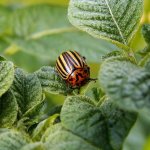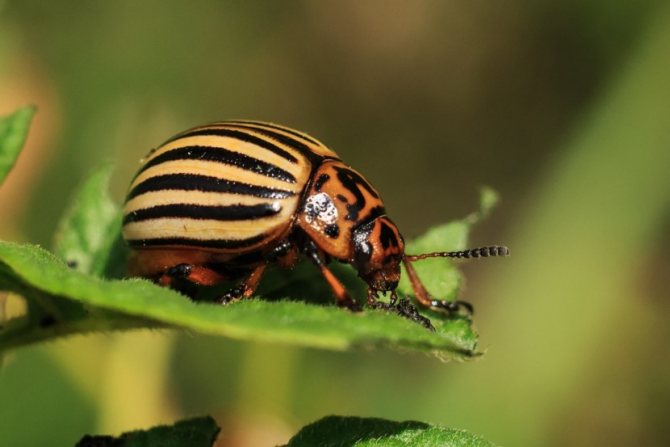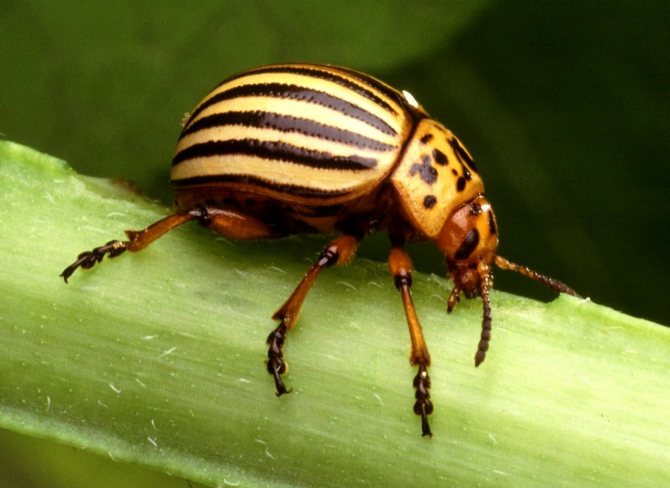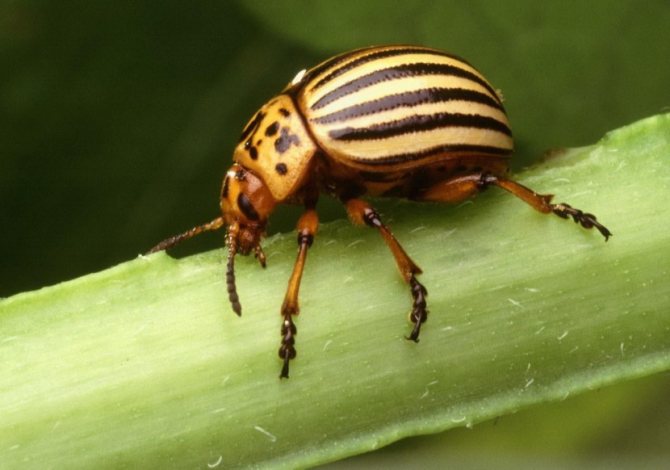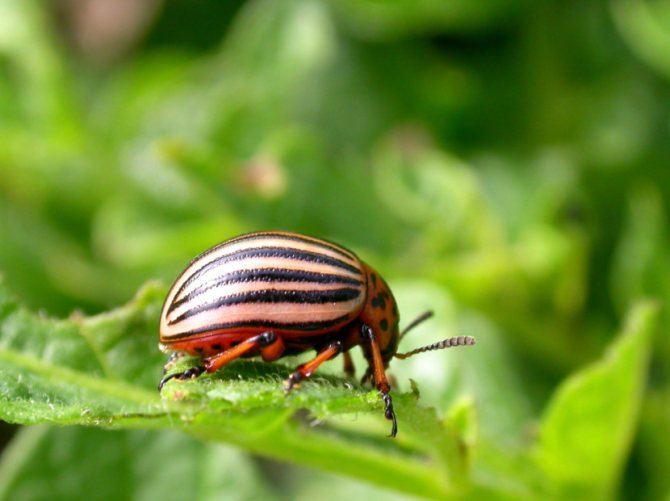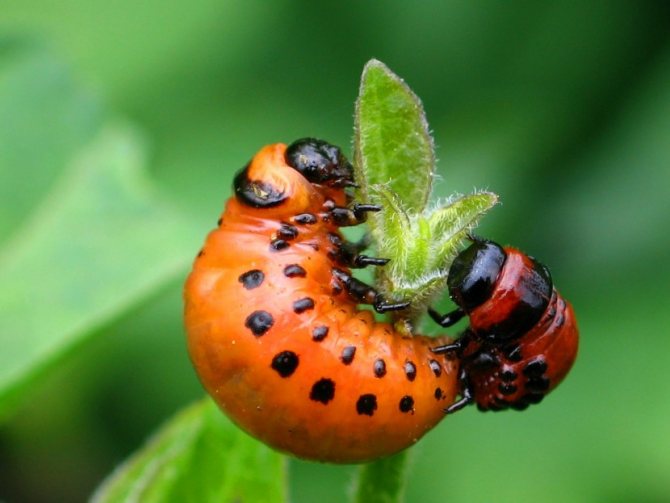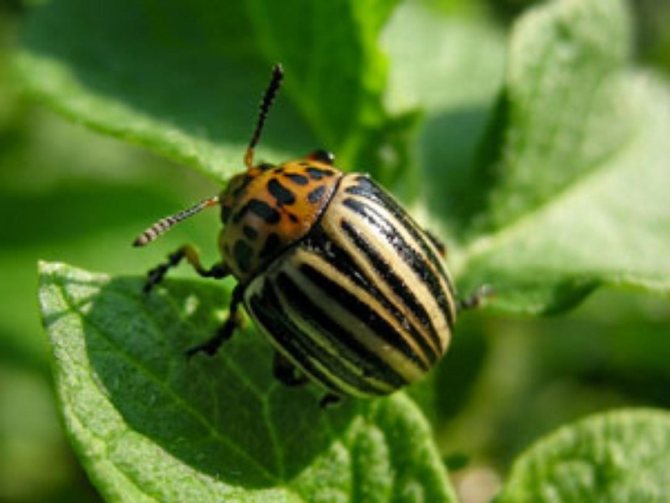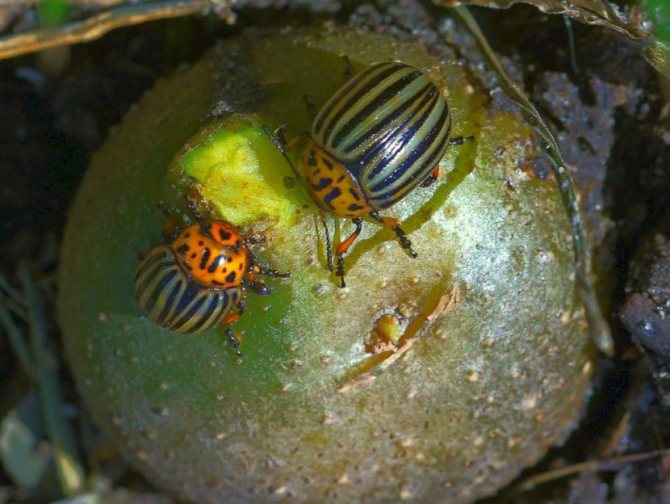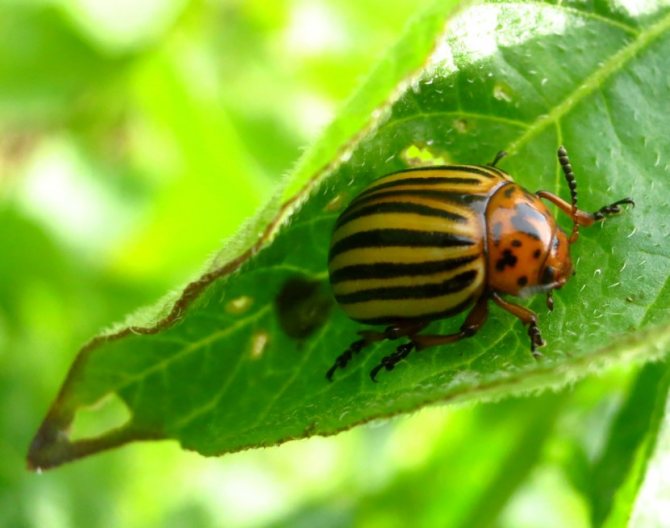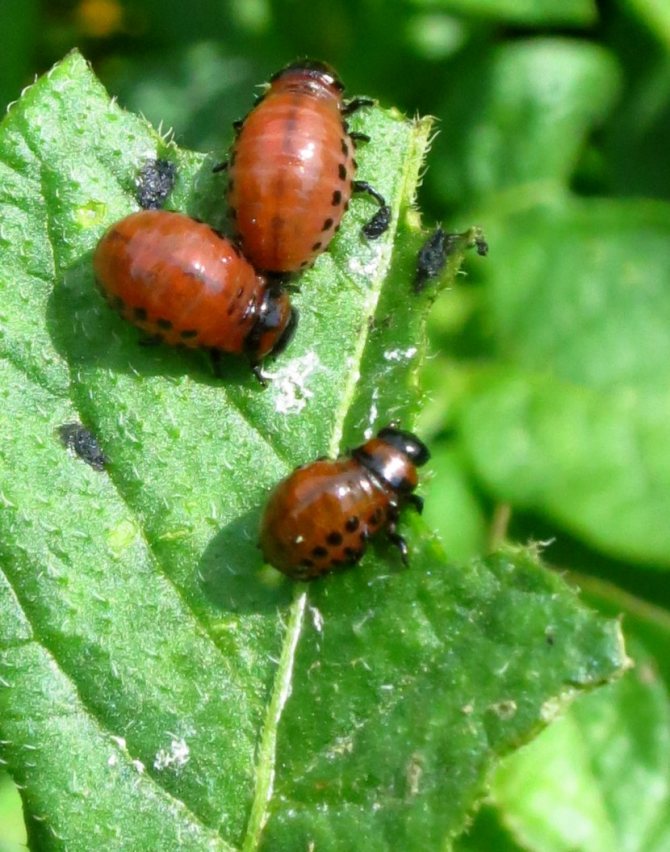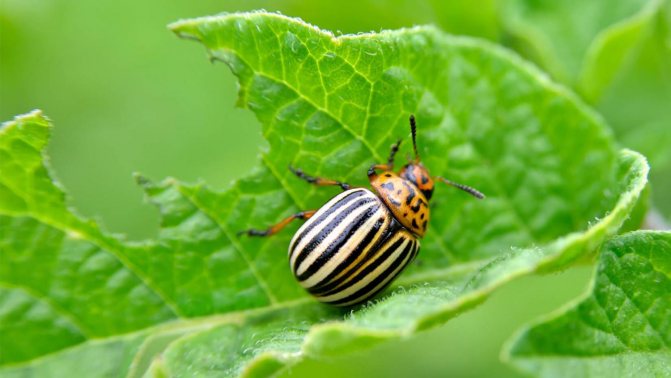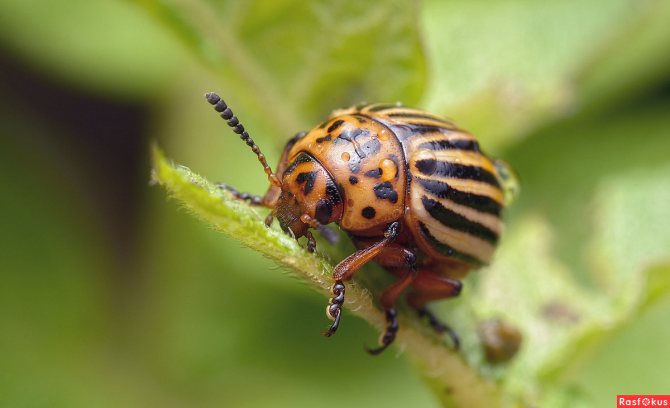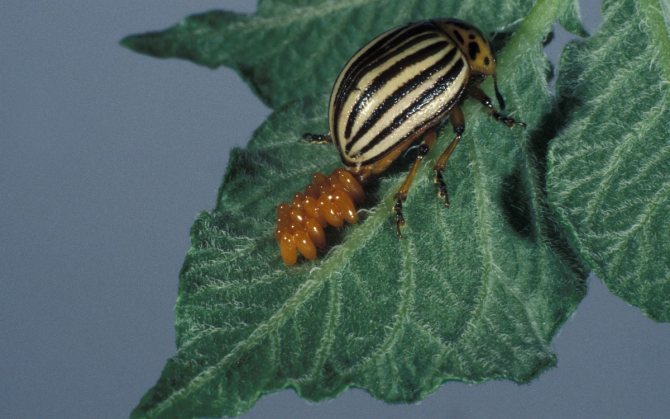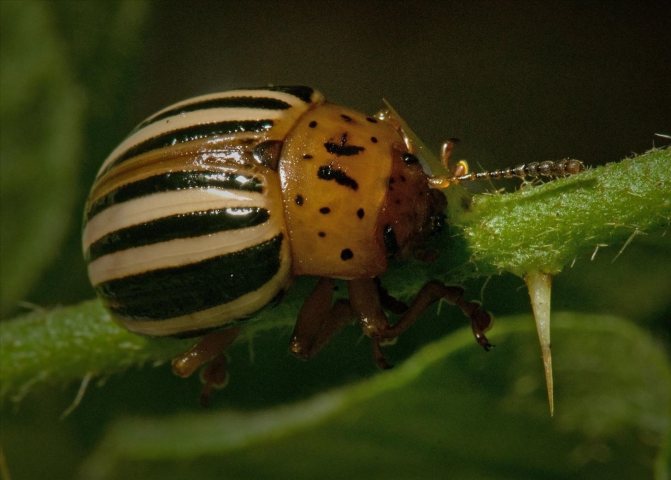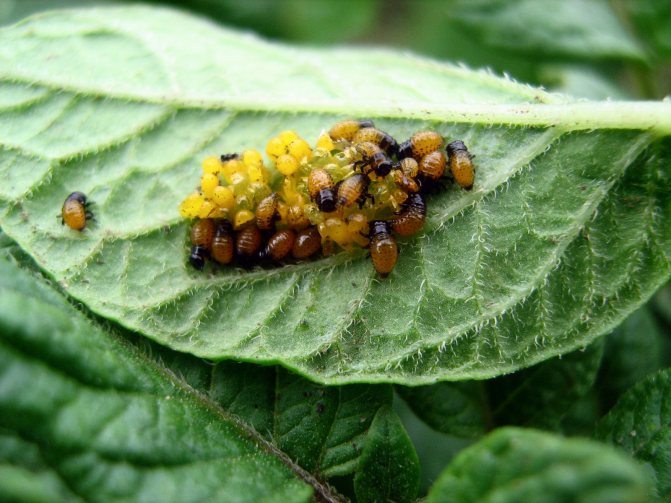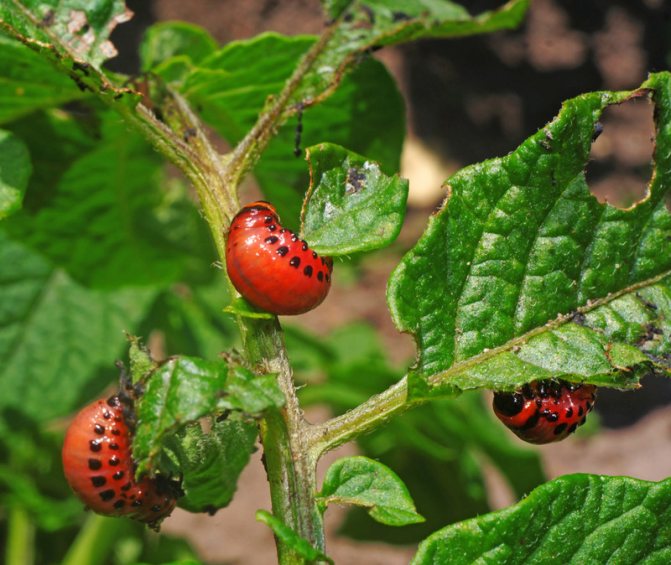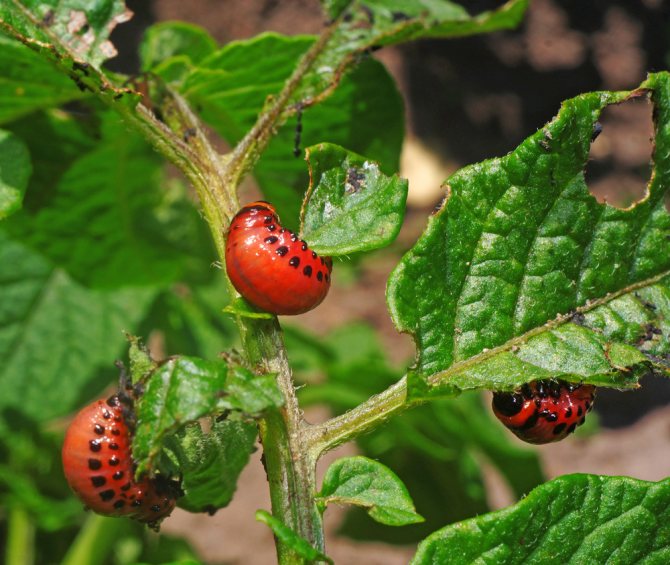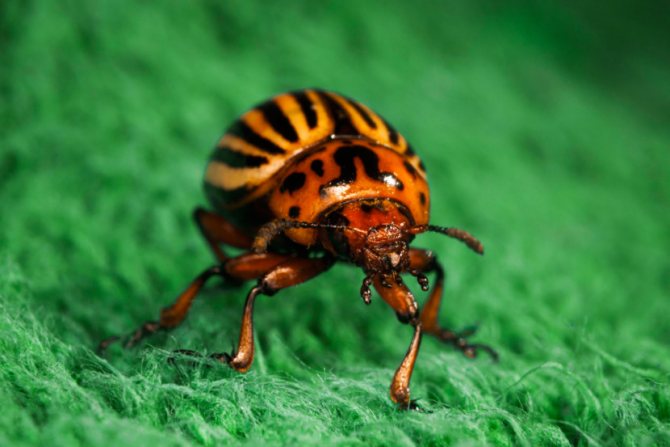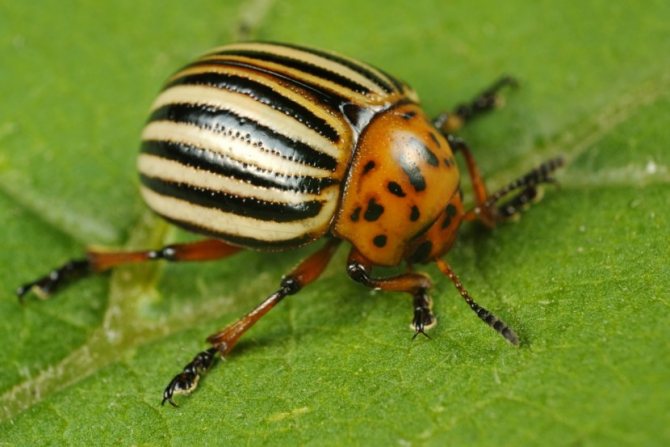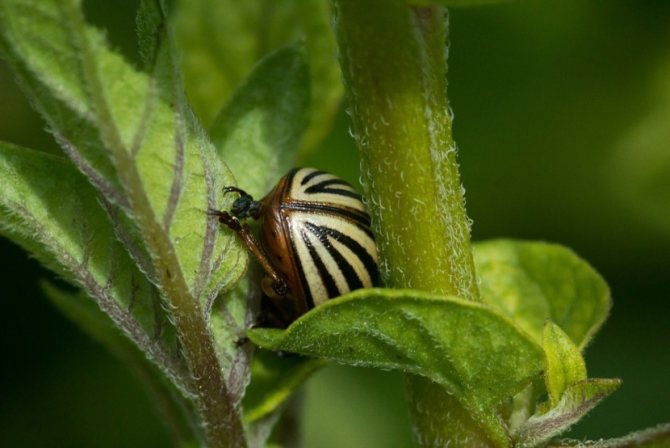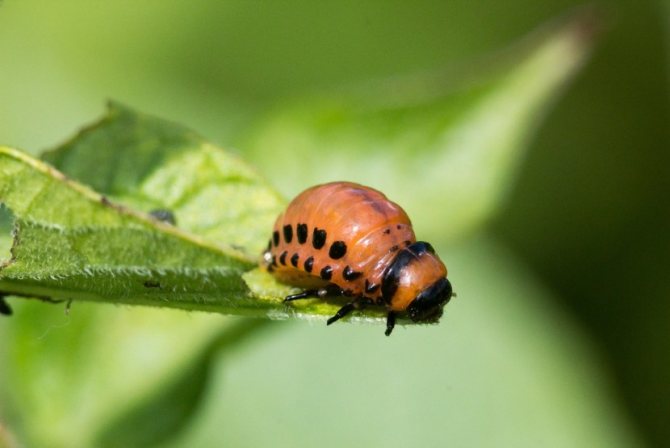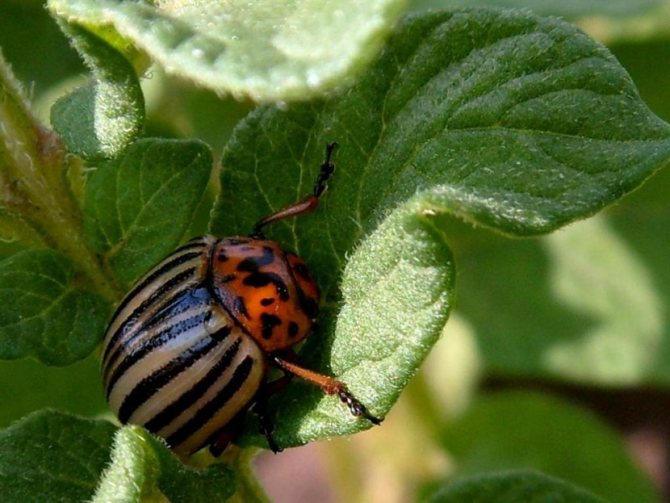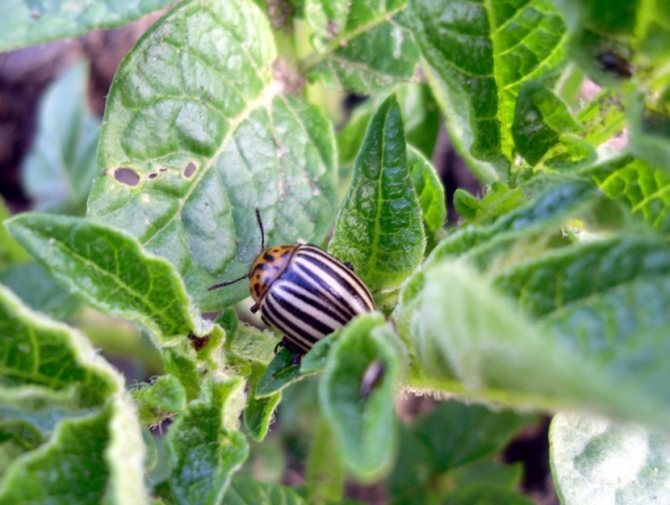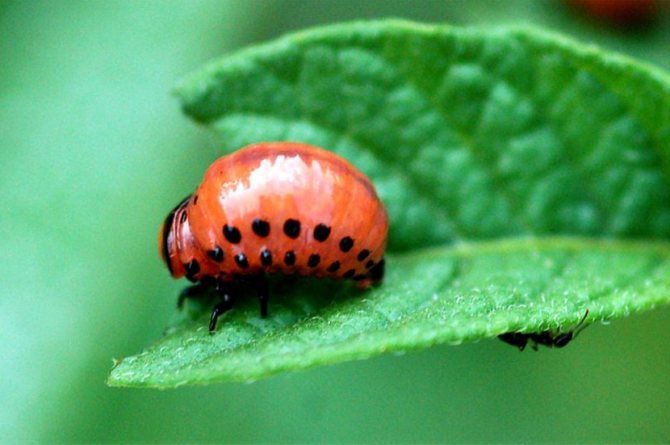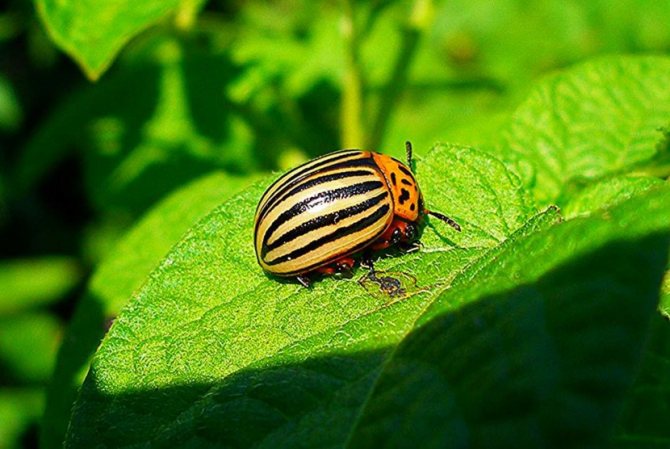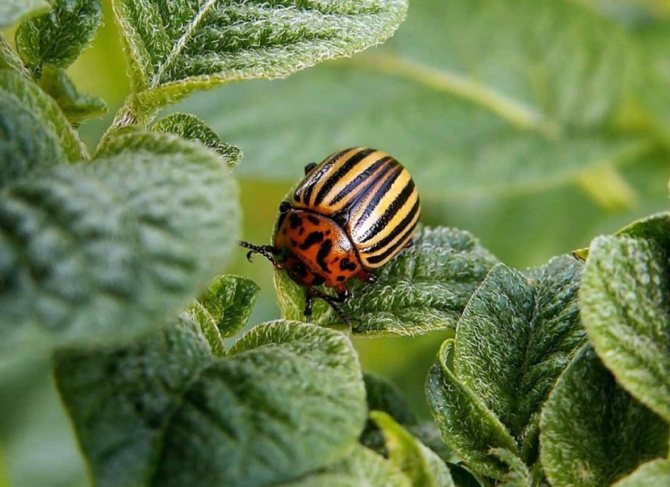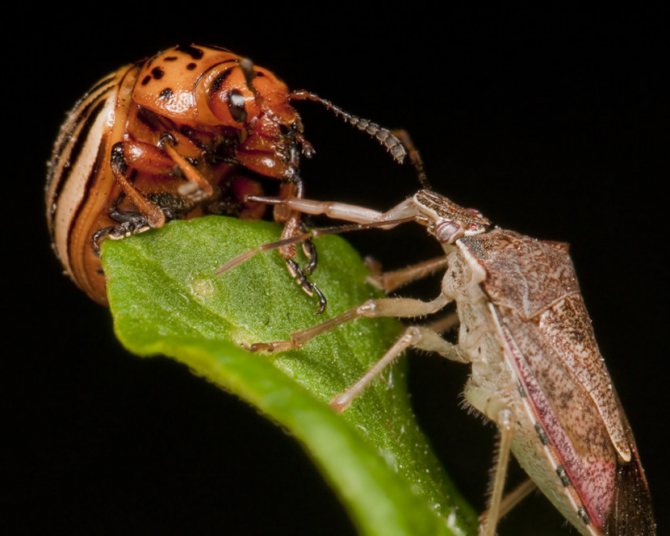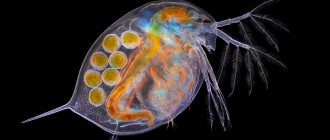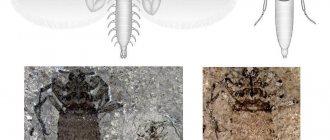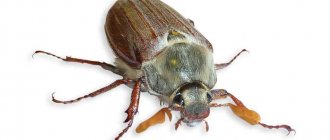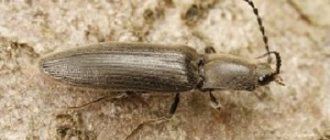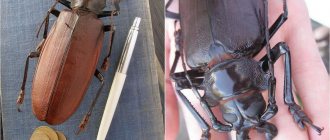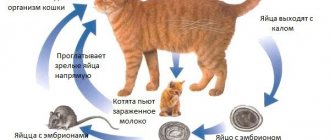Colorado potato beetle - structural features
The Colorado potato beetle belongs to the insects of the leaf beetle family from the order of beetles. Its other name is the potato beetle, as it is the most dangerous for agricultural crops (potatoes).
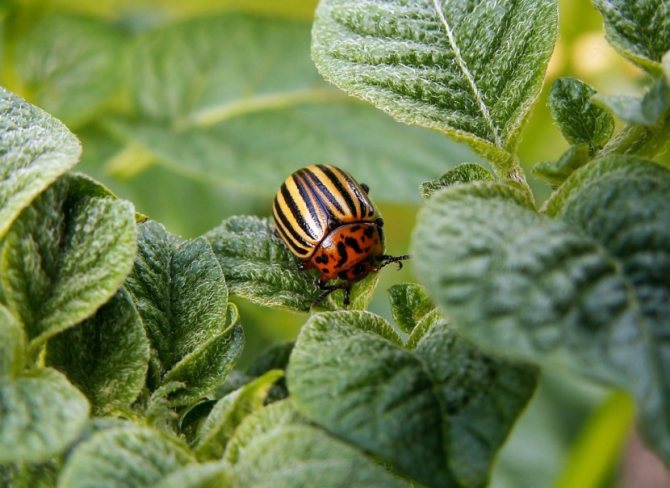
An adult specimen has a body length of up to 12 mm. and 7 mm. wide. The very "figure" of the beetle is oval, flattened at the bottom, and the back is almost round in shape. The photo of the Colorado potato beetle shows that the coloration is quite interesting - shiny alternating black and yellow stripes on the back and an orange belly.


The beetle has three pairs of paws, the ends of which are bent in the form of hooks, which help the insect to freely adhere to the stems and leaves of plants. The painted back seems to unfold, hiding underneath a rather developed pair of wings.
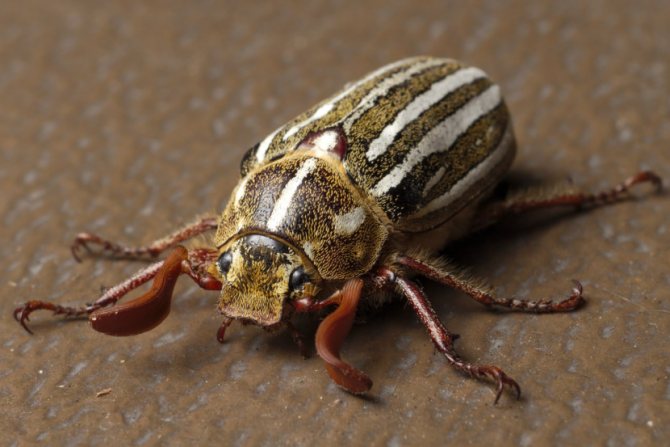

The insect is capable of flying long distances and is capable of not drowning in water, crossing rivers and seas. In flight, the beetle can reach speeds of up to 8 km / h. and climb to great heights.


The good news is that usually the pest does not live for more than one year, but there are individuals that live up to three years.
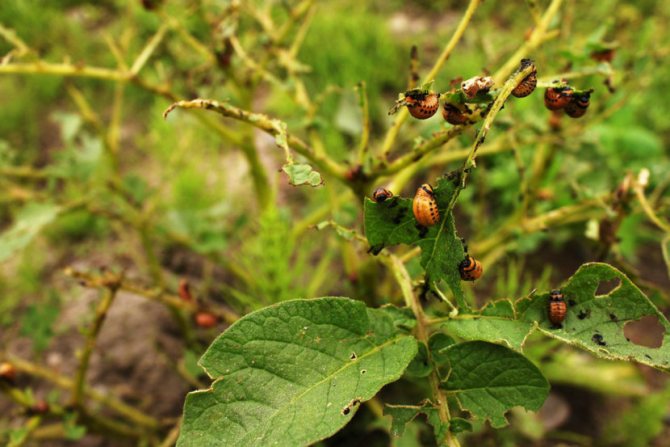

Resettlement of the pest
The birthplace of the Colorado potato beetle is Mexico. And this insect got its name thanks to an event that happened in 1859. Hordes of these pests have attacked and devastated Colorado's huge potato plantations. Somewhat later, after about 17 years, the parasite found itself in the north and was already destroying the potato fields cultivated by the settlers. Later, the Colorado potato beetle on imported potato tubers reached western Europe.


0
In the second half of the 20th century, he reached France. Moving eastward in the course of the prevailing winds in the summer months, by the end of the 1940s, the beetle reached the borders of the USSR. Its first foci on the territory of the USSR were discovered in the Lvov region in 1949. Then, in 1953, he appeared simultaneously in the Kaliningrad, Volyn, Brest and Grodno regions. Finally, on hot windy days in May 1958, a massive flight of the Colorado potato beetle into the Transcarpathian region occurred from Hungary and Czechoslovakia; at the same time on the Lithuanian and Kaliningrad coasts of the Baltic Sea in waves a multimillion-dollar "landing" of beetles from Poland was thrown out.
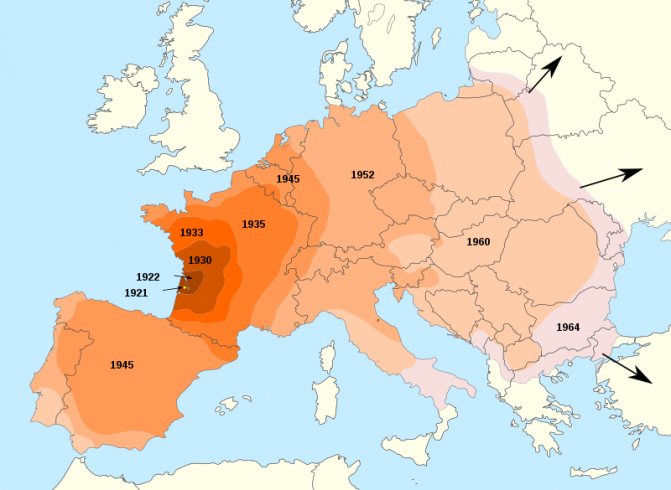

0
From that time on, the mass resettlement of the Colorado potato beetle across the USSR began. In the dry 1975 year, together with wagons loaded with straw, from the regions of the Ukrainian SSR, he came to the regions of the Southern Urals. Since 2000, it has been found in the Primorsky Territory.
Habitats of the Colorado potato beetle
In winter, the potato beetle buries half a meter in the soil and spends all frosty times there, transferring temperatures down to -9 degrees. In the spring, when the ground warms up a little, the insect has to get out to the surface of the earth in search of food.
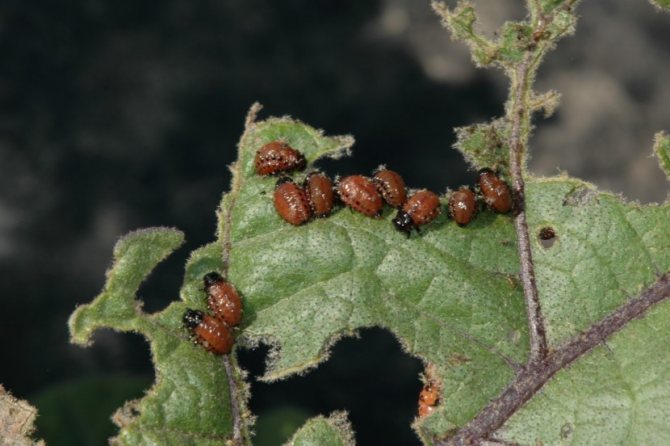

But the main diet is potatoes. But, on occasion, the insect can do without food for two months.


What harm does
The insect and its larvae are extremely voracious.
They got the name "leaf beetle" because of their love for eating plant leaves. The list of the diet includes: potatoes, tomatoes and other crops, they can also enjoy some flowers, for example, tobacco, petunia.
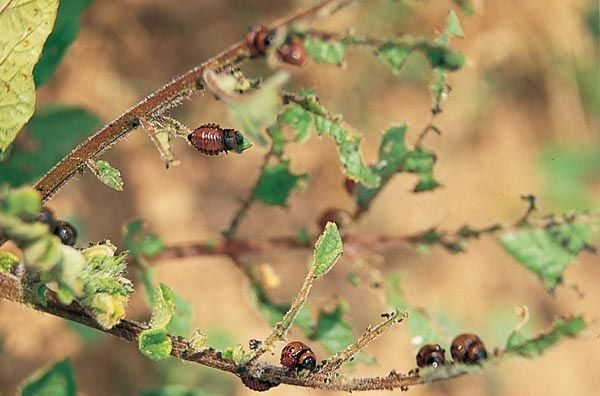

Most often, the beetle eats potato leaves


But, some individuals can destroy tubers in the ground.
The beetle most often refuses the fruits and roots of the plant, since by nature it eats exclusively tops and leaves... But even nature is sometimes deceiving, otherwise it is impossible to explain the fact that some representatives do not refuse fruits and young shoots.
Larvae are much more voracious than adults... They can completely destroy all shoots. When all the leaves are eaten and there are no whole leaves, they go to eat the leaf pulp, this leads to the complete destruction of the plant.
Individuals that are in the ground eat tubers. Potatoes refuse to grow, and in the end they bring a meager harvest, or nothing at all.
Means of fighting the Colorado potato beetle
No matter how small the Colorado potato beetle may seem, it causes quite significant damage to agriculture. Gardeners are constantly updating pest control methods, fighting for the complete destruction of the individual.
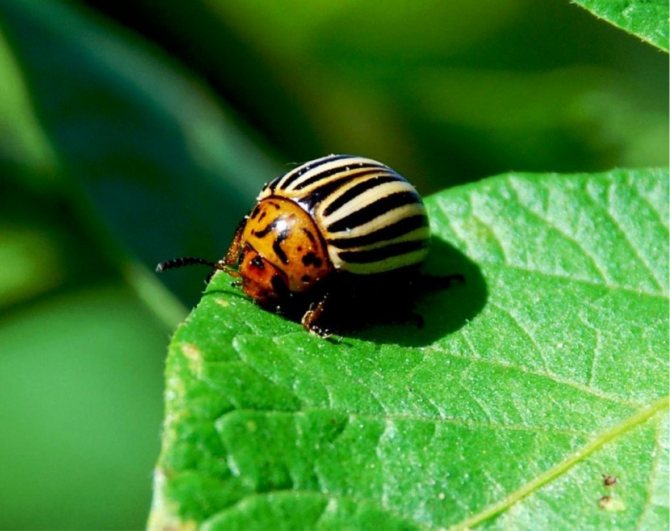

As a rule, wrestling is used in two ways:
Why is the larva dangerous?
The larva is much more voracious than the adults.
She is able to completely destroy all potato leaves, and when the leaves are gone, she will begin to feed on the pulp. The culture stops in its development, therefore, the plant will no longer grow. The gardener may remain with a meager harvest, or not get a single potato from the bush.
- Chrysalis... The larva slides off the potato leaf and goes underground to pupate. The duration of the conversion stage is approximately three weeks, again depending on conditions. The insect changes its color to yellow-orange.
- bug... It crawls out of the place of its imprisonment, namely the pupa, and begins to eat potato leaves. The young individual has a bright orange color.
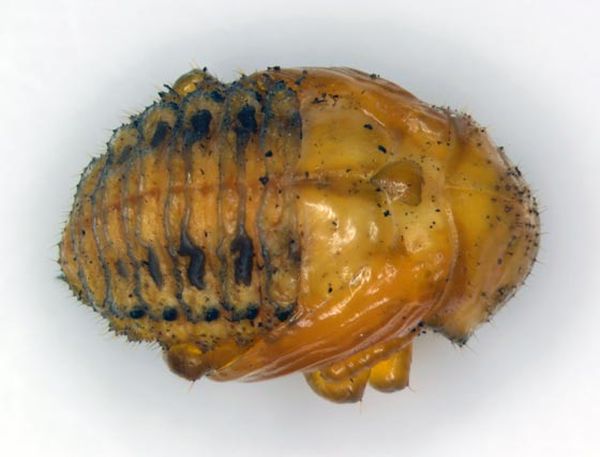

Chrysalis stage
All of these stages are important for the full development of an individual. Quite simple development, each stage takes some time.

